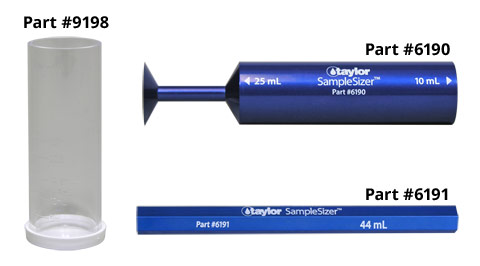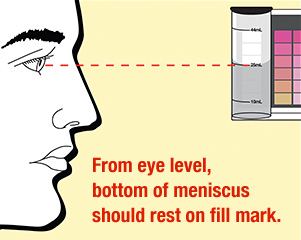How To Take A Pool or Spa Water Sample
The preeminent consideration when obtaining a water sample is to have it be representative of the chemistry in the whole body of water.
First, find a location away from return lines. If the pool has a shallow and a deep end, take the sample near the point where the bottom of the pool starts to slope toward the deep end. If the water is of uniform depth, positioning is not as important as long as you are not near any return lines or dead zones like a corner or steps. If testing a spa, make sure the jets and blowers are turned off.
To take a sample of water sufficient for all tests being performed, rinse out a clean plastic bottle that will hold 8 to 12 ounces of the water to be tested. Rinse the cap off too. Then, immerse the container bottom-side up into the water to about elbow depth (about 18"). Use a plastic container since glass could accidentally break.
Turn the bottle container right-side up to fill. When completely full, bring it to the surface. Cap immediately to keep air out. If you head indoors to do the tests, be aware you will need an inexpensive daylight simulator, such as our #9199, to perform color-matching tests in the right light. Artificial light is not as great a consideration for titrations where you are looking to see the moment the treated solution changes color, as opposed to detecting a shade of color.
If you perform your tests poolside and prefer to take multiple samples using the comparator block, follow the same technique: Take the cap off the tube designated for the test, rinse the cap and tube thoroughly, insert the comparator block bottom-side up to about elbow depth, turn it right-side up, and let the tube fill to the top. Hold the comparator at eye level to see if the water is resting on the designated fill line for the test you are performing. If there’s an excess, simply flick off the extra with a quick motion of your wrist. Or, to save time, use our SampleSizer (#6190 or #6191) to displace the exact amount of water needed for the test being performed. Note that these devices can only be used in our 2000™ Series comparators or the #9198 sample tube.”
Note: Inside a test tube, all samples will display some curvature at the surface of the water. This curvature is called the meniscus and is due to a molecular attraction between the container and its contents. For proper sample volume, be sure the low point of the curvature rests on the fill mark. Using the right volume is very important; otherwise, test results may be inaccurate.
For the most accurate results, begin testing immediately after obtaining your sample. Allowing a sample to sit exposed to air for even a few minutes may cause values to change—especially when testing sanitizer levels.



